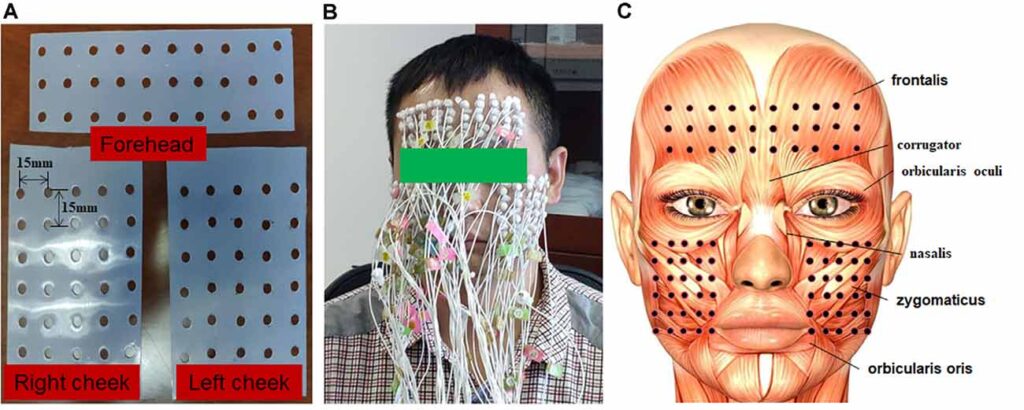Bell’s Palsy, also known as acute peripheral facial palsy, is a condition that causes sudden weakness or paralysis of the muscles on one side of the face. This condition can make it difficult to smile, close the eye on the affected side, or even control facial expressions. While Bell’s Palsy is often temporary and resolves on its own, it can be alarming for those who experience it. In this article, we will explore the causes, symptoms, diagnosis, and treatment options for this condition.

Understanding Bell’s Palsy
Bell’s Palsy occurs when the nerve that controls the muscles on one side of the face becomes inflamed, swollen, or compressed. This nerve, called the facial nerve, is responsible for transmitting signals from the brain to the facial muscles, enabling movement and expression. When the facial nerve is damaged or disrupted, it leads to weakness or paralysis of the facial muscles.
Although the exact cause of Bell’s Palsy remains unclear, researchers believe it may be linked to viral infections, immune system responses, or other factors. It is important to note that Bell’s Palsy is not the result of a stroke, which is another common cause of facial paralysis. Understanding the underlying mechanisms of this condition can help in managing its symptoms effectively.
Causes of Bell’s Palsy
The precise cause of Bell’s Palsy is still unknown, but several factors are believed to contribute to its development. Below are some potential causes:
Viral Infections
- Herpes Simplex Virus: This virus, which causes cold sores and genital herpes, is thought to play a role in triggering Bell’s Palsy.
- Varicella-Zoster Virus: The virus responsible for chickenpox and shingles has also been linked to cases of facial paralysis.
- Epstein-Barr Virus: Known for causing infectious mononucleosis, this virus may also contribute to inflammation of the facial nerve.
- Cytomegalovirus: Another member of the herpes virus family, this virus has been associated with Bell’s Palsy in some cases.
Immune System Reactions
In some individuals, an overactive immune response may mistakenly target the facial nerve, leading to inflammation and swelling. This autoimmune reaction can disrupt the normal functioning of the nerve, resulting in facial paralysis.
Other Contributing Factors
- Pregnancy: Pregnant women, particularly those in their third trimester, are at a slightly higher risk of developing Bell’s Palsy.
- Diabetes: Individuals with diabetes may have an increased susceptibility to nerve-related conditions, including Bell’s Palsy.
- Exposure to Cold Temperatures: Some studies suggest that exposure to cold weather or drafts may trigger the onset of Bell’s Palsy, although this theory is not universally accepted.
Symptoms of Bell’s Palsy
The symptoms of Bell’s Palsy typically appear suddenly and worsen over the course of 48 to 72 hours. These symptoms can vary in severity and may include:
Facial Weakness or Paralysis
The most prominent symptom is the sudden onset of weakness or paralysis on one side of the face. This can make it difficult to perform everyday tasks such as smiling, blinking, or speaking clearly.
Drooping of Facial Features
Individuals with Bell’s Palsy may notice that one side of their face appears droopy. This can affect the mouth, eyelid, and forehead, leading to an asymmetrical appearance.
Difficulty Closing the Eye
One of the hallmark symptoms is the inability to fully close the eye on the affected side. This can lead to dryness, irritation, or even corneal damage if proper care is not taken.
Changes in Taste Perception
Some people experience a diminished sense of taste or altered taste sensations on the front two-thirds of the tongue.
Pain Around the Jaw or Ear
Pain or discomfort may occur around the jaw or behind the ear on the affected side. This pain often precedes the onset of facial weakness.
Increased Sensitivity to Sound
Individuals with Bell’s Palsy may find that sounds seem louder than usual in the ear on the affected side.
Excessive Tearing or Dry Eyes
Depending on the severity of the condition, some people may experience excessive tearing in one eye, while others may struggle with dryness due to incomplete eyelid closure.
Diagnosis of Bell’s Palsy
Diagnosing Bell’s Palsy involves ruling out other potential causes of facial paralysis, such as stroke, tumors, or infections. Healthcare providers typically rely on a combination of physical examinations, medical history reviews, and diagnostic tests to confirm the diagnosis.
Physical Examination
During a physical examination, the doctor will assess the patient’s ability to move different parts of their face, including the forehead, eyelids, cheeks, and mouth. They will look for signs of muscle weakness, asymmetry, or drooping.
Medical History Review
The healthcare provider will ask about the onset and progression of symptoms, any recent illnesses, and the patient’s overall health. This information helps differentiate Bell’s Palsy from other conditions with similar symptoms.
Diagnostic Tests
In some cases, additional tests may be required to rule out alternative diagnoses:
- Magnetic Resonance Imaging: MRI scans can help identify structural abnormalities, such as tumors or lesions, that might be causing facial paralysis.
- Electromyography: This test measures the electrical activity of facial muscles and nerves, providing insight into the extent of nerve damage.
- Blood Tests: Blood work may be performed to check for underlying infections or systemic conditions like diabetes.
Treatment Options for Bell’s Palsy
While Bell’s Palsy often resolves on its own within weeks or months, certain treatments can help speed up recovery and alleviate symptoms. The choice of treatment depends on the severity of the condition and the individual’s overall health.
Medications
- Corticosteroids: These anti-inflammatory drugs, such as prednisone, are commonly prescribed to reduce swelling and inflammation of the facial nerve. Early administration of corticosteroids has been shown to improve outcomes significantly.
- Antiviral Medications: If a viral infection is suspected as the underlying cause, antiviral drugs like acyclovir or valacyclovir may be prescribed in conjunction with corticosteroids.
Eye Care
Because patients with Bell’s Palsy may have difficulty closing their eyes, protecting the affected eye is crucial. Artificial tears, lubricating ointments, and protective eyewear can help prevent dryness and irritation. In severe cases, taping the eyelid shut during sleep may be recommended.
Physical Therapy
Facial exercises and physical therapy can aid in restoring muscle strength and coordination. A trained therapist can guide patients through specific exercises designed to improve facial movement and symmetry.
Surgical Interventions
In rare cases where Bell’s Palsy does not improve after several months, surgical decompression of the facial nerve may be considered. However, this procedure carries risks and is generally reserved for extreme situations.
Alternative Therapies
Some individuals explore complementary therapies such as acupuncture, biofeedback, or herbal supplements to manage their symptoms. While these approaches lack robust scientific evidence, they may provide relief for certain patients.
Prognosis and Recovery
The prognosis for Bell’s Palsy is generally favorable, with most individuals experiencing significant improvement within three to six months. Approximately 70 to 80 percent of patients achieve full recovery without any long-term complications. However, the rate of recovery can vary depending on factors such as age, the severity of symptoms, and the timeliness of treatment.
For a small percentage of individuals, residual weakness or involuntary muscle contractions may persist even after recovery. Regular follow-up appointments with a healthcare provider are essential to monitor progress and address any lingering issues.
Preventive Measures
Since the exact cause of Bell’s Palsy is unknown, there are no definitive preventive measures. However, maintaining a healthy lifestyle, managing stress, and seeking prompt treatment for viral infections may help reduce the risk of developing this condition. Additionally, protecting the face from extreme cold temperatures and avoiding exposure to drafts may offer some level of prevention.
Living with Bell’s Palsy
Living with Bell’s Palsy can be challenging, both physically and emotionally. The visible nature of the condition may lead to self-consciousness or anxiety about social interactions. Support groups, counseling, and open communication with loved ones can help individuals cope with the psychological impact of the condition.
It is also important for patients to remain patient during the recovery process. Healing takes time, and setbacks are not uncommon. By adhering to prescribed treatments and staying proactive about self-care, individuals can optimize their chances of a successful recovery.





